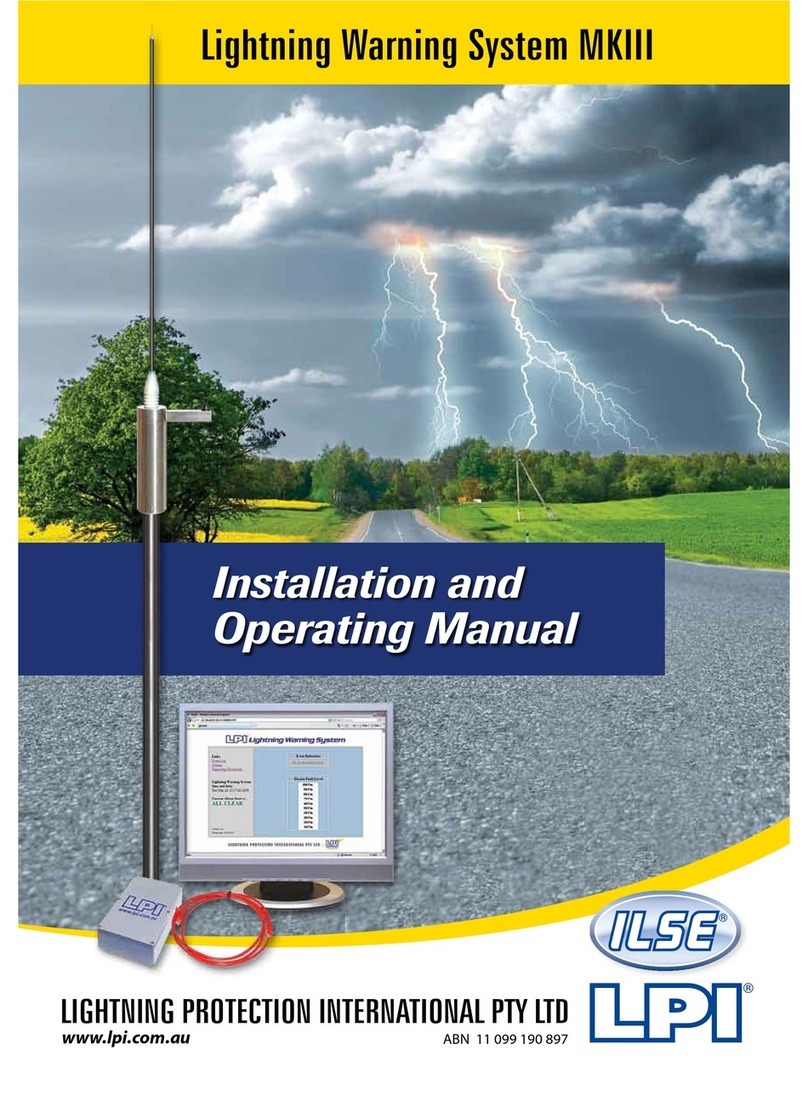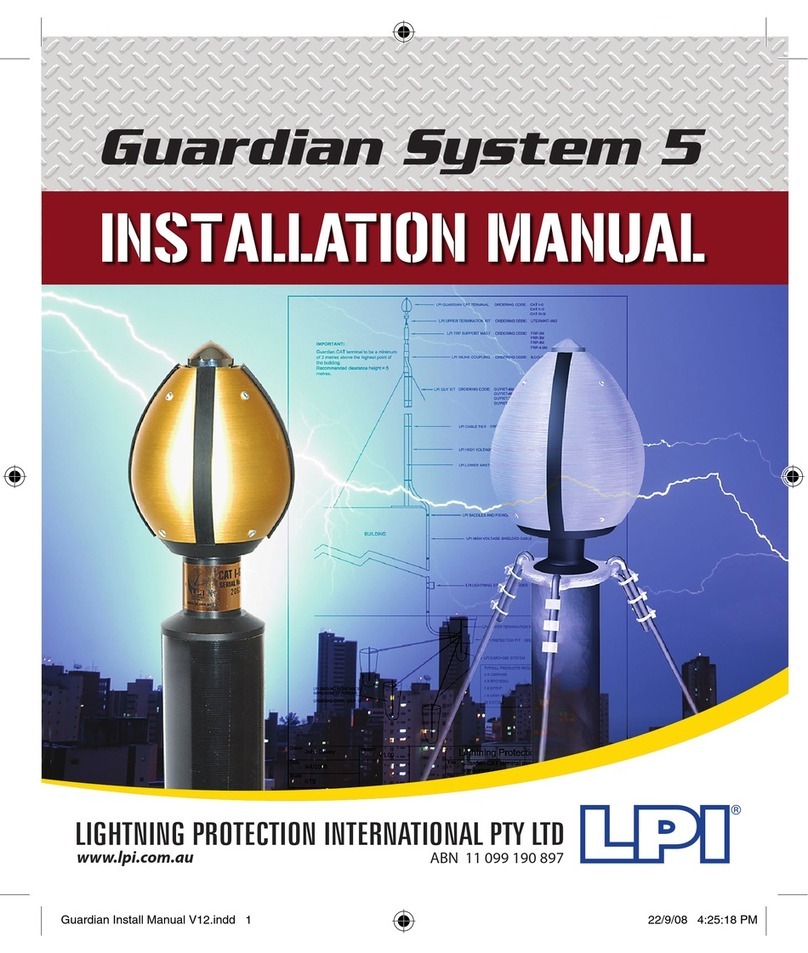Lightning Protection International GUARDIAN PLUS User manual
Other Lightning Protection International Security Sensor manuals

Lightning Protection International
Lightning Protection International Lightning Warning System MKIII User manual

Lightning Protection International
Lightning Protection International Guardian System 5 User manual

Lightning Protection International
Lightning Protection International Stormaster ESE 15 User manual
Popular Security Sensor manuals by other brands

Shinko
Shinko SE2EA-1-0-0 instruction manual

Det-Tronics
Det-Tronics X Series instructions

ACR Electronics
ACR Electronics COBHAM RCL-300A Product support manual

TOOLCRAFT
TOOLCRAFT 1712612 operating instructions

Elkron
Elkron IM600 Installation, programming and functions manual

Bosch
Bosch WEU PDO 6 Original instructions





















